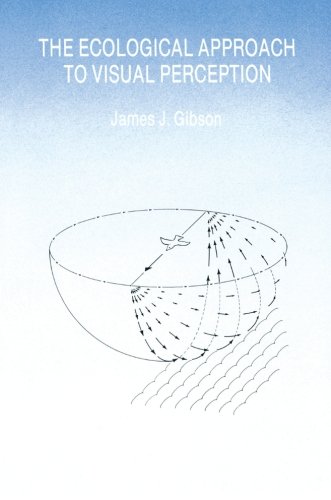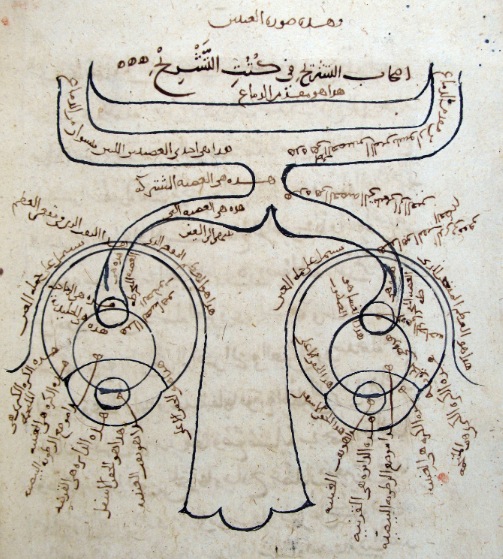James J. Gibson: The Ecological Approach to Visual Perception (1979–) [EN, RU]
Filed under book | Tags: · ambience, ecology, environment, image, information, light, media, movement, object, perception, perspective, psychology, surface, vision

“James J. Gibson (1904–1979) is one of the most important psychologists of the 20th century, best known for his work on visual perception. He received his Ph.D. from Princeton University and his first major work was The Perception of the Visual World (1950) in which he rejected behaviorism for a view based on his own experimental work. In his later works, including The Ecological Approach to Visual Perception (1979), Gibson became more philosophical and criticized cognitivism in the same way he had attacked behaviorism before, arguing strongly in favor of direct perception and direct realism, as opposed to cognitivist indirect realism. He termed his new approach ‘ecological psychology’.”
“He moved from thinking about what patterns could act as stimuli to rethinking the concept of the stimulus itself, ultimately rejecting “stimulus” in favor of his version of “information.” In a 1960 paper that is a classic in its own right, Gibson carefully surveyed the patch work of meanings of the term “stimulus” that could be found in the literature. He concluded that the optical (or acoustic, or haptic etc.) patterning that would best correspond to actual perceiving in the world no longer seemed like a “stimulus” at all in any proper sense. Instead, he proposed a common-sense usage of the term “information” (as opposed to the technical usage of Shannon) which was fairly well developed by that time. By information, Gibson meant structured energy that was information about environmental sources, in contrast to information as structure in an information theoretical sense which implies a sender and a receiver. Gibson’s information is specific to its environmental sources though not a replica or a copy. It certainly is not a stimulus in the sense of energy that triggers a response. Gibson’s information does not come to the animal. The animal goes to it, actively obtaining the information. Part 2 of this volume develops this concept of information and is at the heart of Gibson’s theory.” (from the Introduction)
“Gibson’s legacy is increasingly influential on many contemporary movements in psychology, particularly those considered to be post-cognitivist.”
Publisher Houghton Mifflin, Boston, 1979
This edition, Psychology Press, 2014
ISBN 9781315740218
315 pages
Reviews and commentaries: E. Bruce Goldstein (Leonardo, 1981), Frederick A. Jules (1984), A. P. Costall (Journal of the Experimental Analysis of Behavior, 1984), Maurizio Ferraris (1999, IT), William M. Mace (Ethics & the Environment, 2005).
Wikipedia, FR
Publisher
WorldCat
The Ecological Approach to Visual Perception (English, 1979/2014, 4 MB)
Ekologicheskiy podchod k zritelnomu vospriyatiyu (Russian, trans. T.M. Sokolskoy, 1988, 11 MB)
For more on Gibson see Monoskop wiki.
Comment (1)Mark Rothko: The Artist’s Reality: Philosophies of Art (2004)
Filed under book | Tags: · abstraction, art, art theory, beauty, colour, environment, light, myth, painting, philosophy of art, reality, renaissance, representation, space, symbolism

“One of the most important artists of the twentieth century, Mark Rothko (1903–1970) created a new and impassioned form of abstract painting over the course of his career. Rothko also wrote a number of essays and critical reviews during his lifetime. Although the artist never published a book of his views, his heirs indicate that he occasionally spoke of the existence of such a manuscript to friends and colleagues. Stored in a New York City warehouse since the artist’s death more than thirty years ago, this manuscript, titled The Artist’s Reality, is now being published for the first time.
Probably written around 1940–41, this book discusses Rothko’s ideas on the modern art world, art history, myth, beauty, the challenges of being an artist in society, the true nature of “American art,” and much more. The Artist’s Reality also includes an introduction by Christopher Rothko, the artist’s son, who describes the discovery of the manuscript and the process of bringing it to publication. The introduction is illustrated with a small selection of relevant examples of the artist’s own work as well as with reproductions of pages from the actual manuscript.”
Edited and with an Introduction by Christopher Rothko
Publisher Yale University Press, 2004
ISBN 0300115857, 9780300115857
136 pages
The Optics of Ibn Al-Haytham, Books I–III: On Direct Vision (c1028-38/1989)
Filed under book | Tags: · colour, geometry, light, mathematics, optics, perception, physics, vision

This is the first English translation of first three out of the 7 volumes of the fundamental work on optics by the medieval Arab scientist Ibn al-Haitham or Alhazen (965–c1039). His book exerted a great influence upon science through Witelo, Roger Bacon, Peckham and Kepler. Alhazen investigated many particular cases of reflection and refraction, and drew attention to the light-ray’s property of retracing its path when reversed. He was the first to give a detailed description of the human eye and to study binocular vision. Certain ophthalmological terms originated from the Latin translation of Alhazen’s Arabic text, e.g. retina and cornea.
The Book of Optics (Kitāb al-Manāẓir, كتاب المناظر) presented experimentally founded arguments against the widely held extramission theory of vision (as held by Euclid in his Optica) and in favour of intromission theory, as supported by thinkers such as Aristotle, the now accepted model that vision takes place by light entering the eye.
Part 1 contains the translation; Part 2 an introduction, commentary, Arabic-Latin glossaries, concordance, bibliography, and indices.
Edition of the Arabic text, edited by A. I. Sabra, was published by National Council for Culture, Arts and Letters, Kuwait, in 1983 (Books I-III) and 2002 (Books IV-V). Sabra’s translation of the latter has not yet been published.
Translated with Introduction and Commentary by A. I. Sabra
Publisher The Warburg Institute, University of London, London, 1989
Studies of the Warburg Institute, 40/1-2
ISBN 0854810722, 9780854810727
367 and 246 pages, 4 plates (following p. 42 in Part 2)
Review (Alexander Jones, Isis, 1991)
Review (George Saliba, Speculum, 1992)
Wikipedia
Translator
Publisher (WI)
Publisher (SAS)
PDF (pp xvi-xix of Part 2 missing; 18 MB)
Latin translation:
Liber de aspectiibus et vocatur prospectiva (digital facsimile of Latin translation of all 7 volumes, manuscript, Ms 1393)
Opticae thesaurus (edition of the Latin translation by Friedrich Risner, 1572; Archive.org)
See also the first episode of Simon Schaeffer’s 2004 BBC documentary series Light Fantastic, “Let There Be Light”, where he discusses Alhazen and others.
Comment (0)
